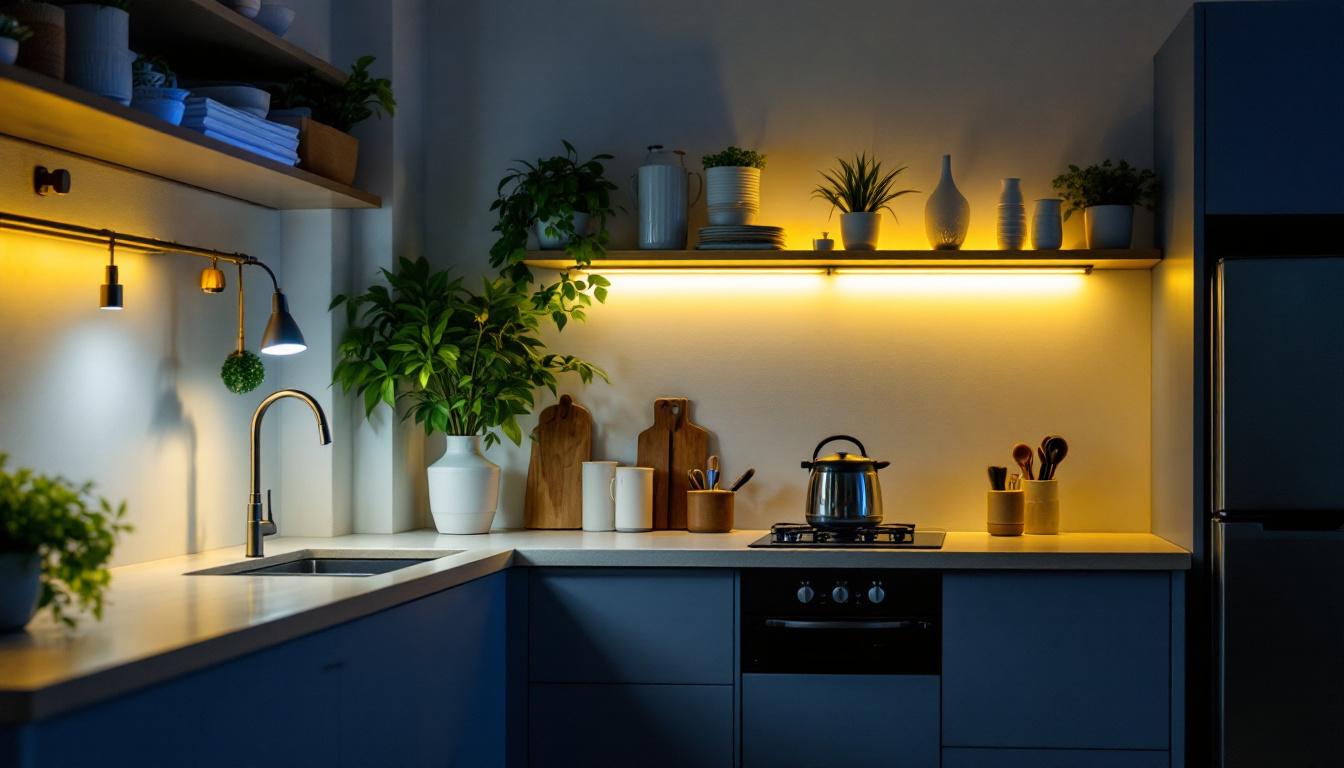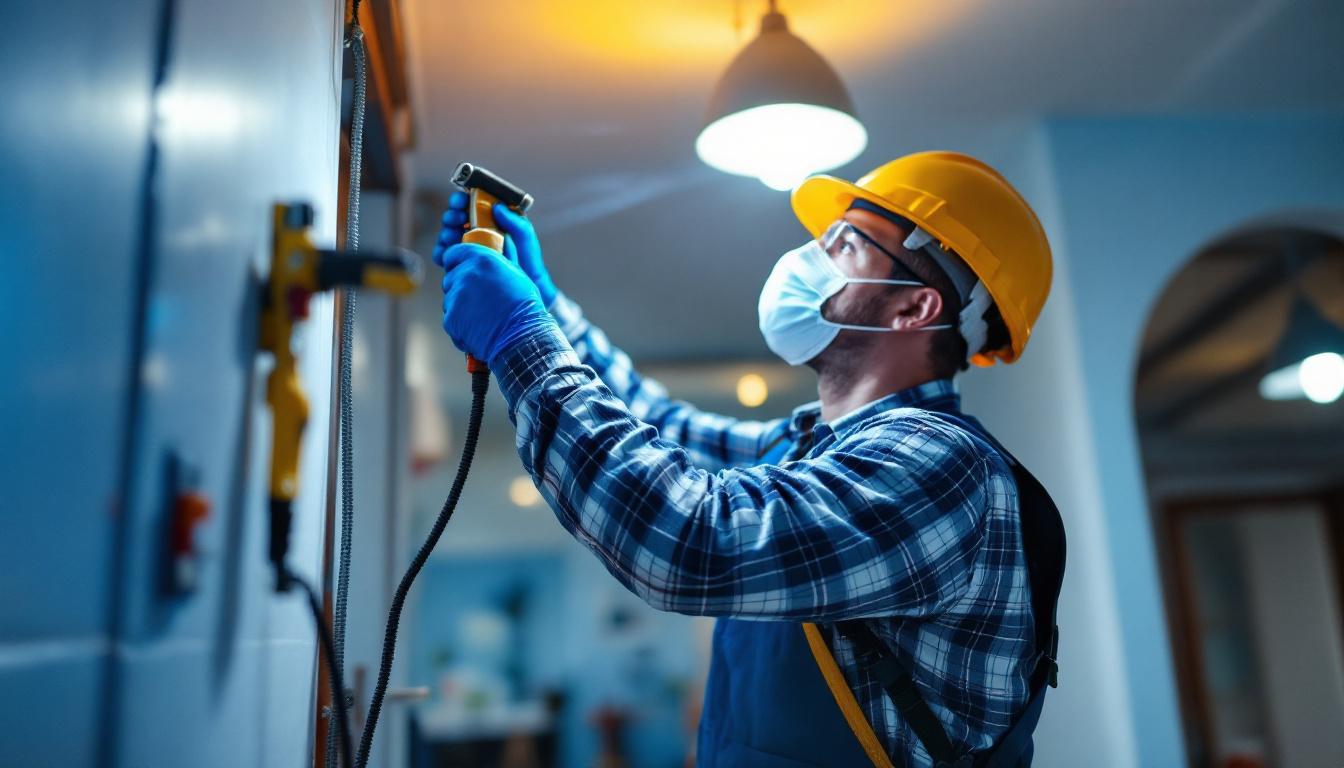
In recent years, the evolution of smart lighting technology has transformed the way spaces are illuminated. Bluetooth recessed lights have emerged as a popular choice among homeowners and contractors alike, offering convenience and versatility. These lights can be controlled via smartphones or smart home systems, allowing users to adjust brightness, color, and even scheduling from the palm of their hand. With the integration of Bluetooth technology, these lights can be easily paired with various devices, enabling users to create personalized lighting experiences that suit their mood or activity, whether it’s a cozy movie night or a vibrant gathering with friends.
As lighting contractors explore options for their projects, understanding the benefits and drawbacks of Bluetooth recessed lights compared to traditional alternatives becomes crucial. This article delves into the features of Bluetooth recessed lighting, evaluates its advantages and disadvantages, and compares it with other lighting solutions available in the market. One of the standout features of Bluetooth recessed lights is their ability to create dynamic lighting scenes. Users can select from a range of colors and brightness levels, allowing for a customizable ambiance that can enhance the aesthetic appeal of any room. Furthermore, many Bluetooth recessed lights come equipped with energy-efficient LED technology, which not only reduces electricity consumption but also extends the lifespan of the fixtures, making them a cost-effective choice in the long run.
In addition to their aesthetic and functional benefits, Bluetooth recessed lights can also contribute to improved home security. By programming lights to turn on and off at specific times, homeowners can create the illusion of occupancy when they are away, deterring potential intruders. Moreover, some models offer integration with motion sensors, which can automatically illuminate spaces when movement is detected, adding an extra layer of safety. As smart home technology continues to advance, the compatibility of Bluetooth recessed lights with other smart devices, such as voice assistants and security systems, further enhances their appeal, making them an integral part of modern home automation solutions.
Bluetooth recessed lights are designed to be installed into ceilings, providing a sleek and modern look. They integrate Bluetooth technology, enabling wireless communication with compatible devices. This feature allows for remote control and customization, making them an attractive option for both residential and commercial applications.
These lights often come with a range of functionalities, including dimming capabilities, color temperature adjustments, and programmable settings. Such features enhance the user experience, allowing for tailored lighting solutions that can adapt to various moods and activities.
One of the standout features of Bluetooth recessed lights is their ease of installation. Unlike traditional wired systems, Bluetooth lights often require minimal wiring, making them ideal for retrofitting existing spaces. Additionally, many models are designed for energy efficiency, often utilizing LED technology that not only reduces energy consumption but also has a longer lifespan.
Moreover, Bluetooth recessed lights can be integrated into existing smart home ecosystems, allowing for seamless control alongside other smart devices. This capability enhances the overall functionality of a space, providing users with a comprehensive lighting solution that can be managed from anywhere.
Energy efficiency is a significant consideration for contractors and homeowners alike. Bluetooth recessed lights, particularly those utilizing LED technology, consume significantly less energy than traditional incandescent or halogen bulbs. This reduction in energy use translates to lower electricity bills and a smaller carbon footprint.
Furthermore, the longevity of LED lights means that replacements are less frequent, reducing maintenance costs over time. For contractors, this aspect can be a selling point when discussing options with clients, emphasizing both cost savings and environmental benefits.
Bluetooth recessed lights come with several advantages that make them appealing to both contractors and end-users. Understanding these benefits can help contractors make informed decisions when recommending lighting solutions.
The convenience of controlling lighting through a smartphone or smart device cannot be overstated. Bluetooth recessed lights typically come with user-friendly apps that allow for easy adjustments to brightness, color, and even scheduling. This level of control enhances the user experience, making it simple to create the perfect ambiance for any occasion.
Additionally, the ability to control multiple lights from a single device streamlines the process, especially in larger spaces. This feature is particularly beneficial in commercial settings, where lighting needs may change throughout the day or week.
Customization is another significant advantage of Bluetooth recessed lights. Many models allow users to choose from a wide range of colors and color temperatures, providing flexibility in creating the desired atmosphere. Whether it’s a warm glow for a cozy evening or bright, cool light for a productive workspace, Bluetooth recessed lights can cater to various preferences.
This level of customization also extends to scheduling features. Users can program their lights to turn on or off at specific times, enhancing security and energy efficiency. For contractors, this ability to offer tailored lighting solutions can be a key differentiator in a competitive market.
While Bluetooth recessed lights offer numerous benefits, they are not without their drawbacks. It’s essential for contractors to consider these disadvantages when evaluating lighting options for their projects.
One of the primary concerns with Bluetooth recessed lights is their reliance on technology. If a user’s smartphone or smart device malfunctions or experiences connectivity issues, it can hinder their ability to control the lights. This dependence on technology may not be suitable for all clients, particularly those who prefer more traditional lighting solutions.
Moreover, Bluetooth technology has its limitations in terms of range. In larger spaces, connectivity issues may arise, leading to inconsistent performance. Contractors should assess the specific needs of each project to determine if Bluetooth recessed lights are the best fit.
Another factor to consider is the initial cost of Bluetooth recessed lights. While prices have decreased over time, they can still be more expensive than traditional lighting options. For budget-conscious clients, this may be a significant consideration. Contractors should weigh the long-term benefits of energy savings and reduced maintenance against the upfront investment.
Furthermore, the installation process can be more complex than traditional lighting, particularly if integrating with existing smart home systems. This complexity may require additional labor costs, which should be factored into project estimates.
When evaluating lighting options, contractors should consider various alternatives to Bluetooth recessed lights. Each type of lighting solution has its own set of advantages and disadvantages, making it essential to understand the specific needs of the project.
Traditional recessed lighting typically relies on hardwired connections and does not offer the same level of control as Bluetooth options. However, these lights are often more straightforward to install and may have lower upfront costs. For clients who prioritize simplicity and reliability, traditional recessed lighting can be a suitable choice.
Moreover, traditional recessed lights are available in various styles and finishes, allowing for customization in terms of aesthetics. While they may lack the smart features of Bluetooth options, they can still provide effective illumination for a variety of settings.
Aside from Bluetooth recessed lights, other smart lighting solutions are available, such as Wi-Fi-enabled lights. These systems often provide more extensive control options, including integration with voice assistants and other smart home devices. However, they may require a more robust network infrastructure, which could be a consideration for some clients.
Wi-Fi-enabled lights can also offer greater range and connectivity compared to Bluetooth options, making them suitable for larger spaces. Contractors should evaluate the specific requirements of each project to determine which smart lighting solution best meets the needs of their clients.
When selecting lighting solutions for a project, several factors should be taken into account. These considerations can help contractors make informed decisions that align with their clients’ needs and preferences.
Understanding the preferences and lifestyle of clients is crucial. Some clients may prioritize convenience and technology, making Bluetooth recessed lights an attractive option. Others may prefer traditional lighting solutions that offer simplicity and reliability. Engaging in open discussions with clients about their lighting needs can help contractors recommend the most suitable options.
The scope of the project and the budget available are also critical factors. For larger projects with extensive lighting needs, investing in Bluetooth recessed lights may provide long-term benefits in terms of energy efficiency and customization. However, for smaller projects or clients with tighter budgets, traditional lighting options may be more appropriate.
Contractors should conduct thorough assessments of each project to ensure that the chosen lighting solutions align with both the client’s vision and financial constraints.
In the ever-evolving landscape of lighting technology, Bluetooth recessed lights offer a modern and flexible solution for various applications. Their convenience, energy efficiency, and customization options make them appealing to many clients. However, it is essential for contractors to weigh the advantages against the potential drawbacks, including reliance on technology and initial costs.
By comparing Bluetooth recessed lights with traditional and other smart lighting alternatives, contractors can provide informed recommendations tailored to the specific needs of their clients. Ultimately, the right choice will depend on a variety of factors, including client preferences, project scope, and budget considerations.
As the lighting industry continues to innovate, staying informed about the latest technologies and trends will empower contractors to deliver exceptional lighting solutions that enhance the spaces they work in.
Ready to elevate your lighting game with the latest Bluetooth recessed lights or explore other premium lighting solutions? At LumenWholesale, we provide lighting contractors like you with the highest quality, spec-grade lighting products at unbeatable wholesale prices. Say goodbye to inflated markups and hello to a vast selection of reliable, high-performance lighting that meets the strictest industry standards. With free shipping on bulk orders, you can stock up on superior lighting without the worry of hidden fees or compromises. Don’t miss out on the perfect blend of quality, affordability, and convenience. Choose LumenWholesale for Wholesale Lighting at the Best Value and make the right choice for your next project.

Discover the importance of waterproof trailer wire connectors in lighting installations.

Discover the frequent pitfalls lighting contractors face when working with metal halide fixtures.

Discover common under counter LEDs mistakes lighting contractors make and learn expert tips to avoid costly errors.

Explore the common pitfalls lighting contractors face when implementing disinfecting light solutions.